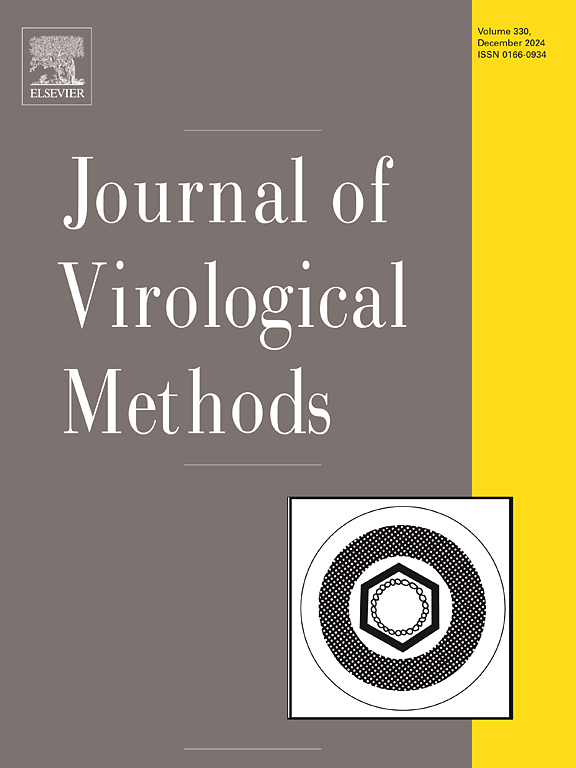Illumina MiSeq和iSeq平台为病毒基因组测序提供可比较的结果。
IF 1.6
4区 医学
Q3 BIOCHEMICAL RESEARCH METHODS
引用次数: 0
摘要
Illumina MiSeq和iSeq是广泛使用的短读下一代测序(NGS)平台。MiSeq仪器专门用于中程通量,而iSeq仪器的通量较低,但更便宜,操作更简单。一些研究比较了Illumina平台对各种标本类型的测序,但很少有量化测序质量的差异,特别是对病毒。本研究比较了在两个平台上测序的SARS-CoV-2、诺如病毒和脊髓灰质炎病毒样本的读取质量、单核苷酸多态性(SNP)调用和组装指标。MiSeq和iSeq修剪后的碱基≥Q30的百分比相等(%≥Q30),参考定位的百分比相等。SARS-CoV-2、诺如病毒和脊髓灰质炎病毒的SNP同源率分别为41 / 43(95.3%)、1628 / 1633(99.7%)和9 / 11(81.8%)。在三个病毒组中,MiSeq和iSeq片段具有相同的N50和最大序列长度。尽管在测序化学和流式细胞设计方面存在平台特异性差异,但MiSeq和iSeq提供了相当的数据质量,这表明使用任何一个平台都应该产生一致的病毒基因组测序结果。本文章由计算机程序翻译,如有差异,请以英文原文为准。
Illumina MiSeq and iSeq platforms yield comparable results for viral genomic sequencing
Summary
Illumina MiSeq and iSeq are widely used short-read next-generation sequencing (NGS) platforms. The MiSeq instrument is specialized for mid-range throughput, while the iSeq instrument has lower throughput but is less expensive and simpler to operate. Several studies have compared Illumina platforms for sequencing of a variety of specimen types, but very few have quantified differences in sequencing quality, particularly for viruses. This study compared read quality, single nucleotide polymorphism (SNP) calling, and assembly metrics for SARS-CoV-2, norovirus, and poliovirus samples sequenced on both platforms. MiSeq and iSeq trimmed reads exhibited equivalent percentage of bases ≥ Q30 (% ≥ Q30) and equivalent reference mapping percentages. SNP concordance rates between the two platforms were 41 out of 43 (95.3 %) for SARS-CoV-2, 1628 out of 1633 (99.7 %) for norovirus, and 9 out of 11 (81.8 %) for poliovirus. Within each of the three virus groups, MiSeq and iSeq assemblies had equivalent N50 and maximum contig lengths. Despite platform-specific differences in the sequencing chemistry and flow cell design, MiSeq and iSeq offered comparable data quality, indicating that using either platform should produce concordant results for viral genomic sequencing.
求助全文
通过发布文献求助,成功后即可免费获取论文全文。
去求助
来源期刊
CiteScore
5.80
自引率
0.00%
发文量
209
审稿时长
41 days
期刊介绍:
The Journal of Virological Methods focuses on original, high quality research papers that describe novel and comprehensively tested methods which enhance human, animal, plant, bacterial or environmental virology and prions research and discovery.
The methods may include, but not limited to, the study of:
Viral components and morphology-
Virus isolation, propagation and development of viral vectors-
Viral pathogenesis, oncogenesis, vaccines and antivirals-
Virus replication, host-pathogen interactions and responses-
Virus transmission, prevention, control and treatment-
Viral metagenomics and virome-
Virus ecology, adaption and evolution-
Applied virology such as nanotechnology-
Viral diagnosis with novelty and comprehensive evaluation.
We seek articles, systematic reviews, meta-analyses and laboratory protocols that include comprehensive technical details with statistical confirmations that provide validations against current best practice, international standards or quality assurance programs and which advance knowledge in virology leading to improved medical, veterinary or agricultural practices and management.

 求助内容:
求助内容: 应助结果提醒方式:
应助结果提醒方式:


